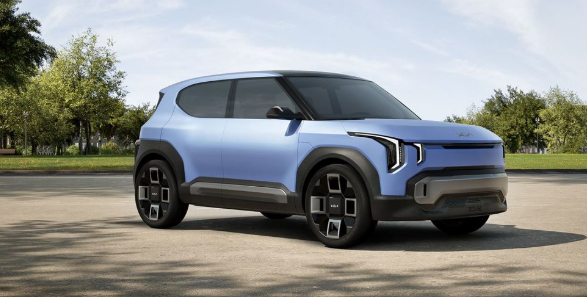HONDA MOTOR CO., Ltd. is introducing a new milestone in electric vehicles, a mini-EV, the N-VAN e, this October 10, 2024.
Previously known as the N VAN in Japan, differently named as N BOX, it has achieved a practical range and spacious cargo area for commercial use by incorporating a high-capacity battery, downsizing the eAxle, additionally optimizing the layout of high-voltage components.
It offers a range of 245 km (152 miles) on a single charge in WLTC mode, perfect for delivery services. Moreover, the charging time is approximately 4.5 hours for normal charging and only around 30 minutes for fast charging.

In addition, Honda has also developed revolutionary technology that extends battery life beyond industry standards necessitating battery changes only every 7 to 8 years. Industry-first revolutionary tech in battery cooling and heating extends battery life and performance, making it charge faster.
The N VAN e is the first commercial-use model with side curtain airbags for both the driver and front passenger seats. Furthermore, it is the first mini-vehicle in Japan to have a Post-Collision Braking System.

Variants Specific Features:
- e: L4: A 4-passenger car perfect for both business and personal purposes.
- e: FUN: Unique with a light natural beige interior, the e: FUN type offers the option of a two-tone exterior color.
- e: G: Features a uniquely shaped passenger-side dashboard to accommodate long items, making it convenient for commercial use.
- e: L2: Retains valuable design elements from the N-VAN, e: L2 prioritizes ease of use and accessibility for an easy-to-use transportation experience.
Similar Posts
Sales History:
Online data shows promising sales figures for the N-van, known as N-box in Japan, a popular van in Japan. The N-VAN/N-BOX saw a significant 14.4% increase in sales from the previous year 2022, reaching 231,385 units. It has held the top market position for two consecutive years, surpassing 200,000 units sold in 2023—strong sales and market dominance, as proved by market data from its predecessor.

First-Hand Experience:
Yamato Transport Driver Shimizu Hiroki, who served as a driver for the practicality test at the Nakano Sales Office, said with a smile, “Up until now, when a vehicle gets heavier, the noise inevitably gets louder, and the acceleration is smoother and quieter, so it was great. The golf bag appealed to me because it could be loaded vertically instead of lying horizontally in light commercial vehicles. I think this will increase the loading capacity for different types of luggage.”
The N VAN e offers capabilities that make seats foldable, creating extra space without actually removing seats. However, it can only transport a limited type of cargo as it still has a roof, which prevents it from carrying bigger, more common items. It also lacks a real commercial travel vehicle feature of multiple seats. The purpose is to be a combination of both a commercial and a family car in both different worlds, additionally making it an impactful mini EV. A new generation is in play.

Design Innovation:
Communication designer Masaki Nagai was selected three weeks after he got a chance to design a body wrap for the Honda N VAN E. Nagai added his flavor to the design but stuck to the request of the design center. On the car’s side profile, he incorporated a modern-looking scene of a city and a text of Honda e: TECHNOLOGY in light blue color with grey shading and meaning which contradicts Honda’s message.
The light blue color symbolizes honesty and reliability, conversely, the grey color represents intellect and conservation, which are nicely suited for cars with history and future in mind. At the rear, Nagai added a charging plug to resemble its electric nature. This attractive design symbolizing the ideas of Honda’s creation made it eye-catching for people in line with the company’s ideology. On the front, he created the classic body in pinstripes to the van with the same colors.


Honda’s Goal for Sustainability:
Honda’s goal for sustainability contains two ideologically important plans: carbon neutrality and zero accident fatalities. From this, they have three levels at which they make it possible. They made this possible by making yearly reports.
In 2022, Honda announced its plans to launch 30 EV models globally with a production volume of more than 2 million units annually by 2030. Many are active in the market such as e: NS1, e: NP1, e: Ny1, Honda Prologue, and Acura ZDX Type S.
Upcoming cars such as the N-VAN e and the new global Honda EV series show that electric vehicles are not just changing the game plan for the future evolving market with new techs such as improved safety, emission control, and comfort. Cars like the N VAN E prove that affordable EVs can become a reality soon.



















